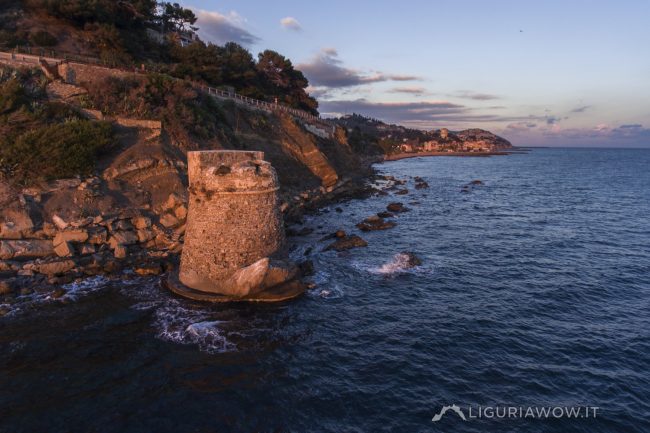Small village in the Prino Valley Dolcedo is the oldest village in the Prino Valley, appearing for the first time in a document dated 1103, addressed to the monks of Lerins, in which the bishop from Albenga, Adelberto, grants the separation of the church of San Tommaso from that of Santa Maria Assunta ai Piani. […]
Continue readingAuthor: Federico Nasi
Church of San Bernardino in Triora
Beautiful and chilling frescoes The church of San Bernardino in Triora dates back to the 15th century and stands along an ancient mule track. The building preserves splendid and chilling frescoes representing the Last Judgment. Initially erroneously attributed to Giovanni Canavesio, the paintings are probably the work of a Tuscan Renaissance artist. Testo a cura […]
Continue readingTower and Clavesana church in Andora
The ancient access to the township The medieval tower and the Romanesque church of Saints Giacomo and Filippo, erected in the 13th century, stand in the hamlet of Castello, a high medieval residential nucleus from which the town of Andora originated.The tower served as a northern access during the Genoese domination. Testo a cura di […]
Continue readingChiapparolo
The village of the Vescino family Ville San Pietro, nowadays an hamlet of the municipality of Borgomaro, “is made up of the villages of Garsi, Barca, Case Soprane, Chiapparolo, Costa, and Marpere. There are plenty of municipal pastures, and therefore the number of cattle remains fairly high, it is more than 400 sheep. ” (quote […]
Continue readingNostra Signora della Rovere
The sanctuary and Roman remains The sanctuary of Nostra Signora della Rovere, in San Bartolomeo al Mare, is one of the oldest in Liguria. Although the first document referring to the building dates back to 1353, the discovery of an earthenware pavement in its subsoil and a Roman “mansio” a few meters away, both dating […]
Continue readingRuve du Megu
The monumental oak of Dr. Gandolfo The Ruve du Megu is a monumental oak, one of the largest in Italy, located near the ancient road connecting Conio and Borgomaro.The name comes from the owner, Dr. Gandolfo, who was a doctor. It is said that the tree risked being cut to make a “fuetto” (whip) for […]
Continue readingOneglia
The main outlet to the sea for Piedmont The most reliable hypothesis on the origin of Oneglia sees an early pre-Augustan settlement on the Castelvecchio hill, which then developed into the “pagus Unelia”, accompanied on the coast by Ripa Uneliae.In 1298 Oneglia became part of the possessions of the Doria family who, in 1488, founded […]
Continue readingTorre di Prarola
Sighting and defense tower against Barbary corsairs Following an incursion in July 1562 by the Barbary, coming from present-day North Africa, the community of the Prino valley obtained consent from Genoa for the construction of a defensive and sighting system consisting of a tower at San Lorenzo and one in Prarolo, both equipped with artillery.The […]
Continue readingShrine of Acquasanta in Lecchiore
The cult of water According to legend, the Sanctuary of Acquasanta was built in the eighteenth century in a place where the Madonna appeared. The building stands near the Rio dei Boschi (woods’ stream) not far from an ancient water mill.The name of the sanctuary derives from a marble statue of the Blessing Virgin and […]
Continue readingPigna
A medieval village that preserves important works of art Although the territory retains traces of prehistoric settlements, the current town of Pigna originated around a castle built by the counts of Ventimiglia between the twelfth and thirteenth centuries, in a strategic position to dominate the road axis between the coast of Ventimiglia and the village […]
Continue reading







